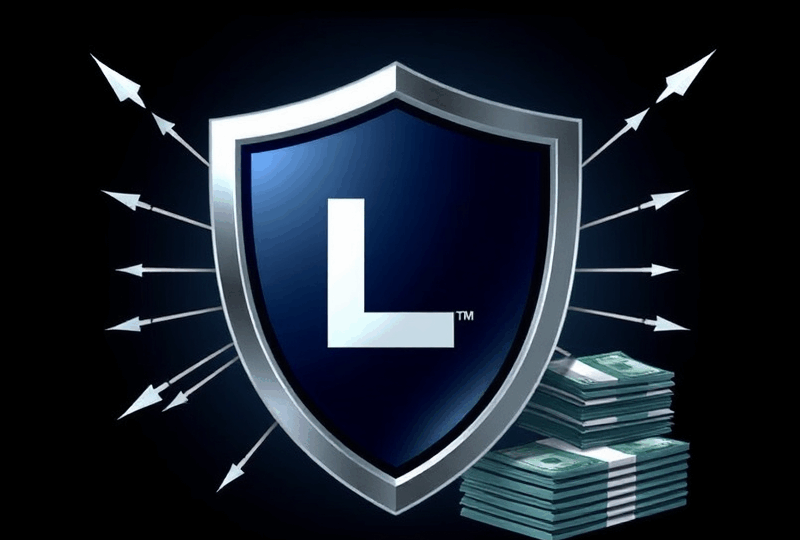
Lockheed Martin (LMT): Is This Defense Stock a Shield for Your Portfolio?

Hello, fellow investors and observers of global security! When you think about companies that build the aircraft, missiles, satellites, and technology that nations rely on for defense, Lockheed Martin (LMT) is often at the very top of that list. As the world’s largest defense contractor, Lockheed Martin plays a critical role in providing advanced systems essential for national security and global stability. Given its position and the nature of its business, LMT stock is sometimes viewed by investors as a relatively stable holding, perhaps even a “shield” for an investment portfolio, especially during times of economic uncertainty or geopolitical tension. But is this perception accurate? Can a company whose fortunes are so closely tied to government spending truly offer a reliable haven for your investments, and is it a compelling opportunity right now? You’re asking questions that delve into the unique dynamics of the defense sector and how its characteristics translate into investment potential and risk. The purpose of this article is to take a friendly, in-depth look at Lockheed Martin (LMT) stock, exploring its business model, the factors that contribute to its stability (or lack thereof), the challenges it faces, and what you should consider when deciding if it fits into your investment strategy. Let’s explore whether this defense giant can indeed serve as a shield for your investments.
Lockheed Martin: The World’s Largest Defense Contractor
Lockheed Martin Corporation is a global security and aerospace company engaged in the research, design, development, manufacture, integration, and sustainment of advanced technology systems, products, and services. Formed in 1995 through the merger of Lockheed Corporation and Martin Marietta, the company has a long heritage of innovation in aerospace and defense. Headquartered in Bethesda, Maryland, Lockheed Martin is the largest defense contractor globally, with the U.S. government, particularly the Department of Defense, being its primary customer. The company is known for some of the most iconic and technologically advanced defense platforms in the world, including the F-35 Lightning II fighter jet, the F-16 Fighting Falcon, Black Hawk helicopters, various missile defense systems, satellites, and naval systems.
Understanding Lockheed Martin’s Business Segments
Lockheed Martin’s operations are structured into four primary business segments, reflecting its diverse portfolio of defense and aerospace capabilities:
- Aeronautics: This is typically Lockheed Martin’s largest segment by revenue. It is responsible for the design, development, manufacture, sustainment, and upgrade of advanced military aircraft, including the F-35 Lightning II, the F-16 Fighting Falcon, the C-130 Hercules transport aircraft, and the F-22 Raptor. The F-35 program is a major driver for this segment, representing a significant portion of the company’s overall revenue and backlog.
- Missiles and Fire Control (MFC): This segment provides air and missile defense systems, tactical missiles and air-to-ground precision strike weapons, logistics, fire control systems, and manned and unmanned ground vehicles. Key products include the PAC-3 missile, the Javelin anti-tank missile, and the HIMARS rocket system. This segment is highly responsive to current geopolitical tensions and conflicts.
- Rotary and Mission Systems (RMS): This segment produces military and commercial helicopters (primarily through its Sikorsky subsidiary, known for the Black Hawk helicopter), naval systems (including combat ships and radar systems), and simulation and training solutions. It also provides complex systems integration and sustainment services.
- Space: This segment is involved in the design, development, manufacture, and integration of satellites, space transportation systems, and strategic missile systems. It serves military, civil, and commercial customers, providing critical capabilities for communication, navigation, weather forecasting, and national security space missions.
This segmentation shows that while heavily focused on defense, Lockheed Martin’s business is spread across different domains (air, land, sea, space, cyber) and types of products, which can offer some internal diversification.
The “Shield” Concept: Strengths of a Defense Giant
The idea of a defense stock like Lockheed Martin serving as a “shield” for investments stems from several characteristics that can provide relative stability and resilience, particularly during times when other sectors of the economy are struggling:
- Reliance on Government Spending: Lockheed Martin’s primary customer is the U.S. government, and defense spending is often less volatile than consumer spending or private sector capital investment. While budgets can fluctuate, national security remains a core government function, leading to relatively stable demand for essential defense capabilities, even during economic downturns.
- Large and Predictable Backlog: Lockheed Martin operates on long-term contracts, often spanning many years, for the development and production of major defense systems. This results in a massive order backlog – the value of contracts awarded but not yet completed. This backlog provides significant visibility into future revenue streams, offering a degree of predictability that is rare in many other industries. The sheer size of the backlog acts as a buffer against short-term economic fluctuations.
- High Barriers to Entry: The defense industry, especially at the prime contractor level for complex systems, has extremely high barriers to entry. It requires immense technological expertise, vast financial resources for research and development, specialized manufacturing capabilities, stringent security clearances, and navigating complex government procurement processes. Building the necessary trust and long-term relationships with government customers also takes decades. This limits competition to a few major players, providing established companies like LMT with a strong competitive moat.
- Essential and Technologically Advanced Products: Lockheed Martin provides systems that are critical for national defense and security. The demand for advanced fighter jets, missile defense systems, and satellites is driven by strategic needs and technological superiority requirements, making these products essential purchases for governments regardless of short-term economic conditions.
- Recurring Revenue from Sustainment and Upgrades: Once major platforms like the F-35 or Black Hawk helicopters are delivered, they require ongoing maintenance, repair, spare parts, and upgrades throughout their operational life, which can extend for decades. This creates a significant stream of recurring, often higher-margin, revenue from sustainment activities, adding a layer of stability to the business model that is less tied to new production cycles.
- Global Geopolitical Environment: Unfortunately, periods of increased global instability, geopolitical tensions, and conflicts often lead to increased defense spending by the U.S. and its allies as they seek to modernize their forces and enhance their capabilities. While a somber reality, this environment can translate into increased demand and a favorable business climate for defense contractors like Lockheed Martin.
These factors contribute to the perception that Lockheed Martin, as a leading defense contractor, possesses characteristics that can make its stock a relatively stable and resilient investment, potentially acting as a “shield” against broader market volatility.
Challenges and Risks to the “Shield”
However, no investment is without risk, and the “shield” provided by a defense stock like Lockheed Martin has its vulnerabilities. Investors must carefully consider these challenges:
- Dependency on Government Budgets and Politics: While defense spending is relatively stable, it is ultimately determined by political decisions and government budgets. Shifts in political priorities, budget negotiations, the national debt level, or changes in administration can lead to funding cuts for specific programs or overall defense spending reductions (as seen during periods like sequestration). A significant downturn in defense budgets would directly impact LMT’s revenue and profitability.
- Program Execution Risk: Developing and producing highly complex defense systems like the F-35 is incredibly challenging and involves significant risks. Major programs can face technical difficulties, production delays, cost overruns, and performance issues. Problems with a large program can lead to financial penalties, reduced profitability, negative publicity, or even program restructuring or cancellation, significantly impacting the company’s performance and reputation. The F-35 program, while a major asset, has also faced significant scrutiny and challenges over its history.
- Political and Policy Risk: Changes in U.S. foreign policy, international alliances, or the approach to global conflicts can influence the demand for specific defense systems and the overall defense strategy, impacting which programs are prioritized and funded.
- Intense Competition for Major Contracts: While the number of competitors is limited, the competition for winning major defense contracts is extremely intense among the large prime contractors. Losing a bid for a significant program can impact future revenue and growth prospects.
- Regulatory Environment: As a defense contractor, Lockheed Martin operates under strict government regulations regarding security, export controls (like ITAR), and procurement processes. Changes in these regulations can impact operations and international sales.
- Supply Chain Vulnerabilities: Lockheed Martin relies on a vast and complex network of suppliers for components and materials. Disruptions in the supply chain, whether due to geopolitical issues, economic factors, or supplier performance problems, can impact production schedules and costs.
- Cybersecurity Threats: As a key player in national security and technology, Lockheed Martin is a prime target for cyber attacks by state actors and other adversaries. A successful cyber intrusion could compromise sensitive information, disrupt operations, or damage the company’s reputation and ability to secure future contracts.
- Public and Political Scrutiny: Defense contractors often face public and political scrutiny regarding the cost, performance, and necessity of defense programs. This scrutiny can lead to program delays, cost caps, or cancellations.
These factors demonstrate that while Lockheed Martin benefits from the stability of the defense sector, it is exposed to unique and significant risks, particularly those tied to government policy, program execution, and the political environment.
Financial Health and Valuation Considerations
When evaluating LMT stock, investors typically focus on several key financial metrics. The company has a history of strong revenue, consistent profitability, and robust cash flow generation, underpinned by its large and stable order backlog. The size and trend of the backlog are crucial indicators of future revenue visibility. Lockheed Martin is also known for its strong commitment to returning value to shareholders through dividends and share repurchases. It is a “Dividend Aristocrat,” having increased its dividend for over 20 consecutive years, which is highly attractive to income-focused investors and signals financial strength and stability. From a valuation perspective, investors compare metrics like the price-to-earnings (P/E) ratio, price-to-sales (P/S) ratio, and dividend yield to LMT’s historical valuation and to its peers in the aerospace and defense industry. Defense stocks often trade at valuations that reflect their relative stability and predictability compared to more cyclical sectors, but their valuations can still fluctuate based on the outlook for defense spending and overall market sentiment.
The Defense Industry Landscape and Future Outlook
The global defense industry is currently influenced by a complex and evolving geopolitical landscape. Increased tensions in various regions, the rise of near-peer competitors, and the proliferation of new technologies are driving demand for military modernization and advanced capabilities. This environment generally supports continued, and in some cases increased, defense spending by the U.S. and its allies. Lockheed Martin’s portfolio, particularly its leadership in areas like advanced aircraft (F-35), missile defense, and space systems, positions it well to compete for future contracts aligned with these priorities. The future outlook for LMT will depend on its ability to successfully execute on major existing programs (especially the F-35), win new contracts in key growth areas, manage costs effectively, innovate in emerging technologies, and navigate the political and budgetary dynamics in the U.S. and international markets. The long-term nature of defense procurement means that the company’s performance is often tied to multi-year government planning cycles.
Is LMT Stock a “Shield” or Just Resilient? (Synthesis)
So, is Lockheed Martin (LMT) stock truly a “shield” for your investment portfolio? While no stock offers absolute protection against all market downturns or risks, LMT possesses characteristics that make it relatively resilient and less susceptible to certain types of economic shocks compared to many other companies. Its deep ties to stable government defense spending, massive order backlog, high barriers to entry, and recurring sustainment revenue provide a significant degree of stability and predictability. It’s less exposed to the immediate fluctuations of consumer spending or the rapid technological disruption seen in some commercial sectors. In this sense, it can act as a defensive component within a diversified portfolio, offering a degree of protection during broader economic downturns. However, it is not an impenetrable shield. It is exposed to significant, sector-specific risks related to government budget decisions, program execution challenges, political shifts, and intense competition for major contracts. A significant cut in defense spending or major issues with a key program could certainly impact the stock price. Therefore, while perhaps not a complete “fortress,” LMT can be viewed as a relatively stable and resilient component within a diversified investment portfolio, particularly for investors seeking exposure to the defense sector and valuing dividend income and long-term contract visibility.
What Should You Do? Actionable Steps for Investors
If you are considering investing in Lockheed Martin (LMT) stock, here are some actionable steps to take:
- Research Lockheed Martin’s Business Segments: Understand what each segment does, its key programs (like the F-35), and what drives its revenue.
- Analyze the Defense Budget Outlook: Pay close attention to U.S. defense spending trends, priorities, and potential budget risks. How might geopolitical events influence spending?
- Evaluate the Company’s Backlog: Look at the size and trend of LMT’s order backlog. Does it provide strong revenue visibility for the coming years?
- Review Financial Performance: Analyze trends in revenue, profitability, earnings per share, and cash flow over several years, considering defense spending cycles.
- Assess Valuation and Dividend: Look at key valuation metrics (P/E, P/S) relative to peers and historical levels. Evaluate the dividend yield and the company’s track record of dividend growth and sustainability.
- Understand Program Risks: While difficult for external investors to fully assess, be aware that major programs carry execution risk. Follow news related to LMT’s key programs, particularly the F-35.
- Consider Geopolitical Factors: How might global events and U.S. foreign policy influence demand for LMT’s products from the U.S. and international customers?
- Assess Your Risk Tolerance and Portfolio Fit: Does a stock tied to defense spending fit with your investment philosophy and risk tolerance? How would it fit within your overall diversified portfolio? Avoid over-concentration.
- Focus on the Long Term: Defense contracts are long-term. If you invest, do so with a long-term perspective, understanding that the stock’s performance is tied to multi-year government spending cycles and global security trends.
Making an informed decision about LMT requires understanding the unique characteristics of the defense industry and balancing the company’s inherent stability and long-term contract visibility against the risks of budget fluctuations, program execution, and political factors. It’s a stock that can serve as a resilient component in a diversified portfolio for investors who understand these dynamics and value the stability offered by the defense sector.
Lockheed Martin: A Key Player in a Complex World
In conclusion, Lockheed Martin (LMT) is the world’s largest defense contractor, with a diversified business model that benefits from relatively stable government demand, a massive order backlog, high barriers to entry, and recurring sustainment revenue. These factors contribute to its reputation as a potentially resilient investment, offering a degree of stability that can act as a “shield” during broader economic downturns. However, it is not immune to risk, facing significant, sector-specific challenges related to government budget dependency, program execution, political factors, and intense competition. While perhaps not poised for “massive growth” in the way a tech startup might be, LMT offers exposure to a critical sector with long-term demand drivers tied to global security needs. For investors seeking stability, dividend income, and exposure to the defense industry within a diversified portfolio, LMT warrants careful consideration. By doing your research, understanding the industry dynamics, and focusing on the long term, you can make a confident decision about whether Lockheed Martin has a place in your investment strategy. Wishing you insight, diligence, and success in your investing journey! 😊







